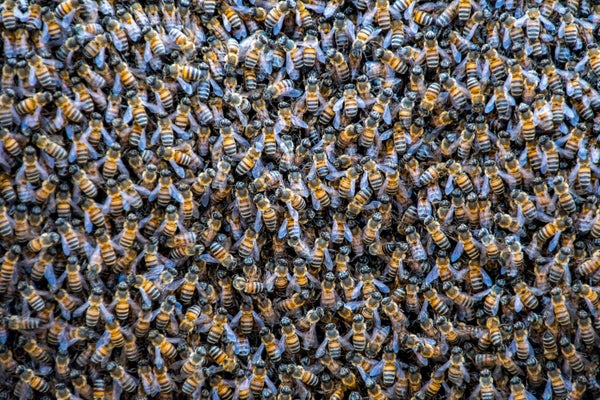This is Scientific American’s 60-Second Science. I’m Shahla Farzan.
Every honeybee colony has its own unique scent like a fingerprint. And bees use that scent to recognize their nest mates—basically saying, “You smell like me, so I’m going to let you into the colony.”
But here’s the mystery: If you transfer a baby bee into a new hive, not only does the colony accept it, but that bee will eventually smell like its adopted nest mates—even though they’re not genetically related.
On supporting science journalism
If you're enjoying this article, consider supporting our award-winning journalism by subscribing. By purchasing a subscription you are helping to ensure the future of impactful stories about the discoveries and ideas shaping our world today.
“This kind of got us thinking, ‘Perhaps it’s not actually the genetics of the bee; it’s actually the genetics of the microbes that live within the bee.’”
Cassondra Vernier is a postdoctoral researcher [now] at the University of Illinois. She knew gut microbes can affect the scent and communication of other animals, like hyenas.
So she and her co-authors designed a series of experiments to test whether microbes also change the scent compounds coating the outside of honeybees, known as cuticular hydrocarbons. [Cassondra L. Vernier et al., The gut microbiome defines social group membership in honey bee colonies]
In one experiment, they fed different gut microbes to newly hatched sister bees. The bees developed distinct microbiomes—and they also produced different cuticular hydrocarbon scents. On the other hand ...
“If they were treated with different inoculums, they recognized each other as non-nest mates. And they attacked each other, usually in the form of biting each other.”
In other words, bees from the same colony did not recognize each other when they had different gut microbes.
Washington University [in St. Louis] biology professor and co-author Yehuda Ben-Shahar says the microbes are changing the bees physiologically and controlling their complicated social behaviors. But he adds this relationship is mutually beneficial for the bacteria and the bees.
“The bees have to have some of these bacteria, so you have a system where this relationship serves the biology of both the bacteria and the host. And it gets to a point where it’s obligatory, so one cannot exist without the other.”
Being able to distinguish nest mates from invaders is absolutely critical, Ben-Shahar says.
Without that ability, bees would be vulnerable to nest parasites—and to other bees looking to steal their most precious commodity: honey. And so the entrance fee must be paid—not in dollars but in scents.
For Scientific American’s 60-Second Science, I’m Shahla Farzan.
—Shahla Farzan
[The above text is a transcript of this podcast.]

